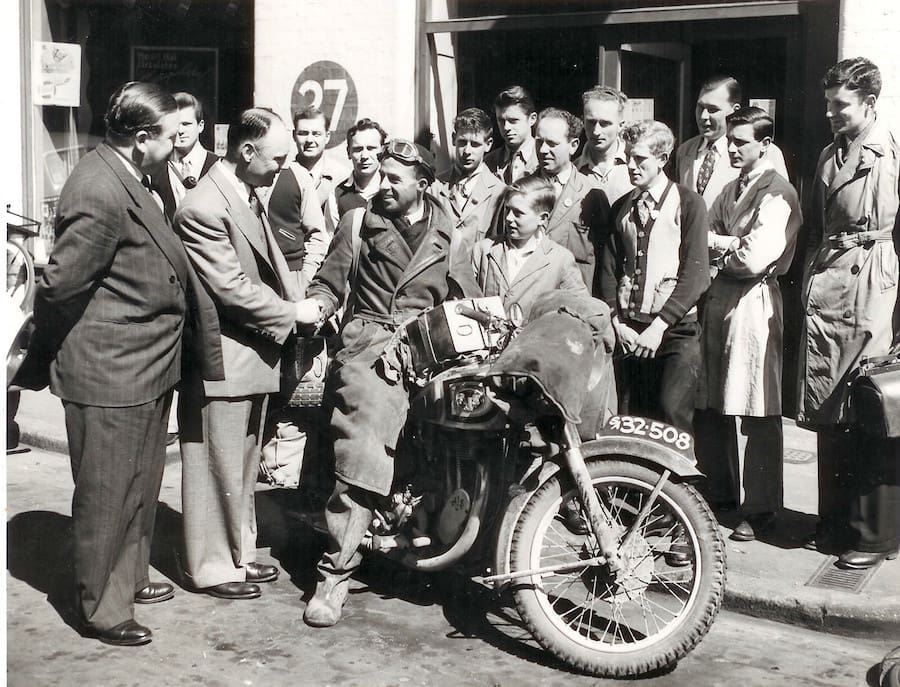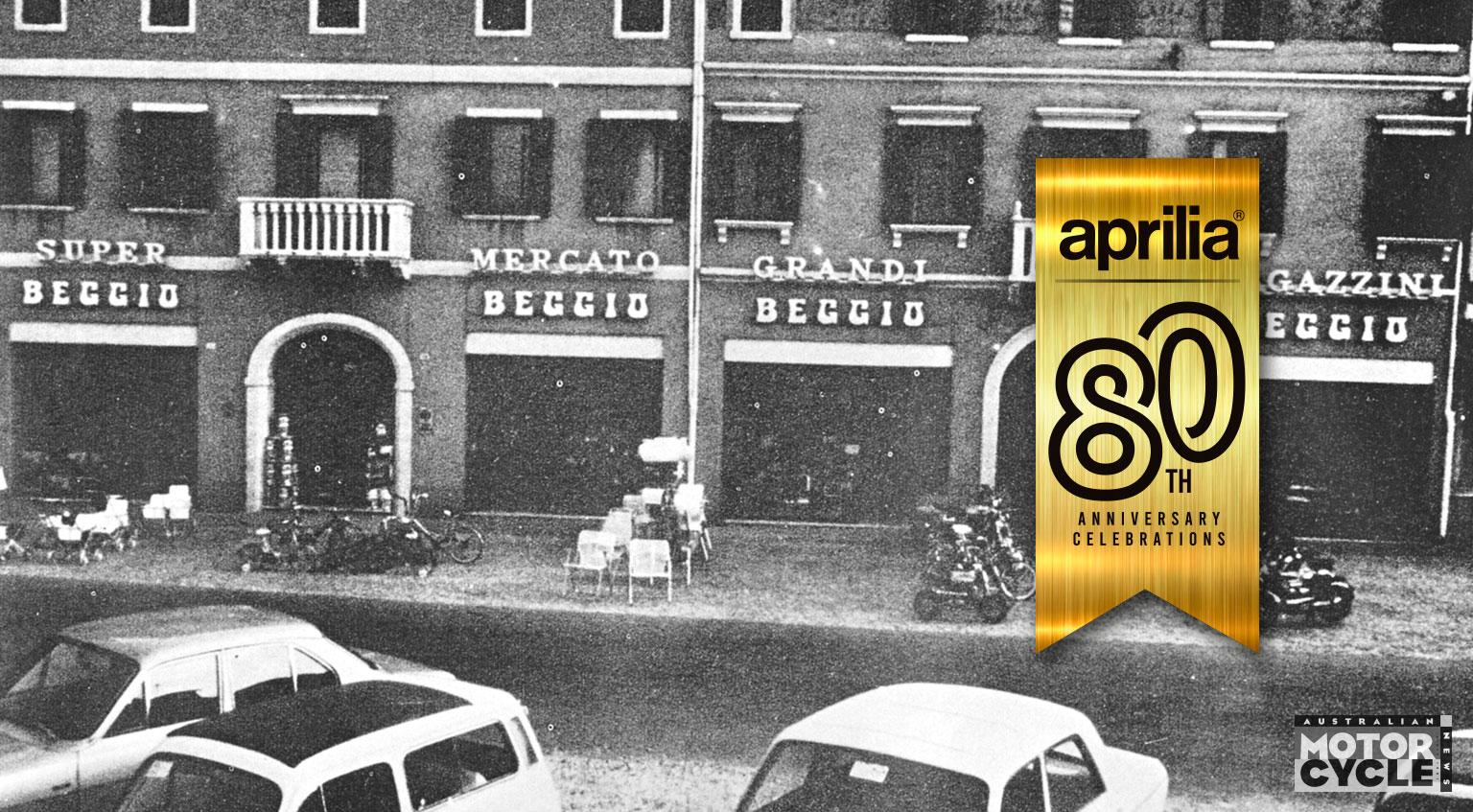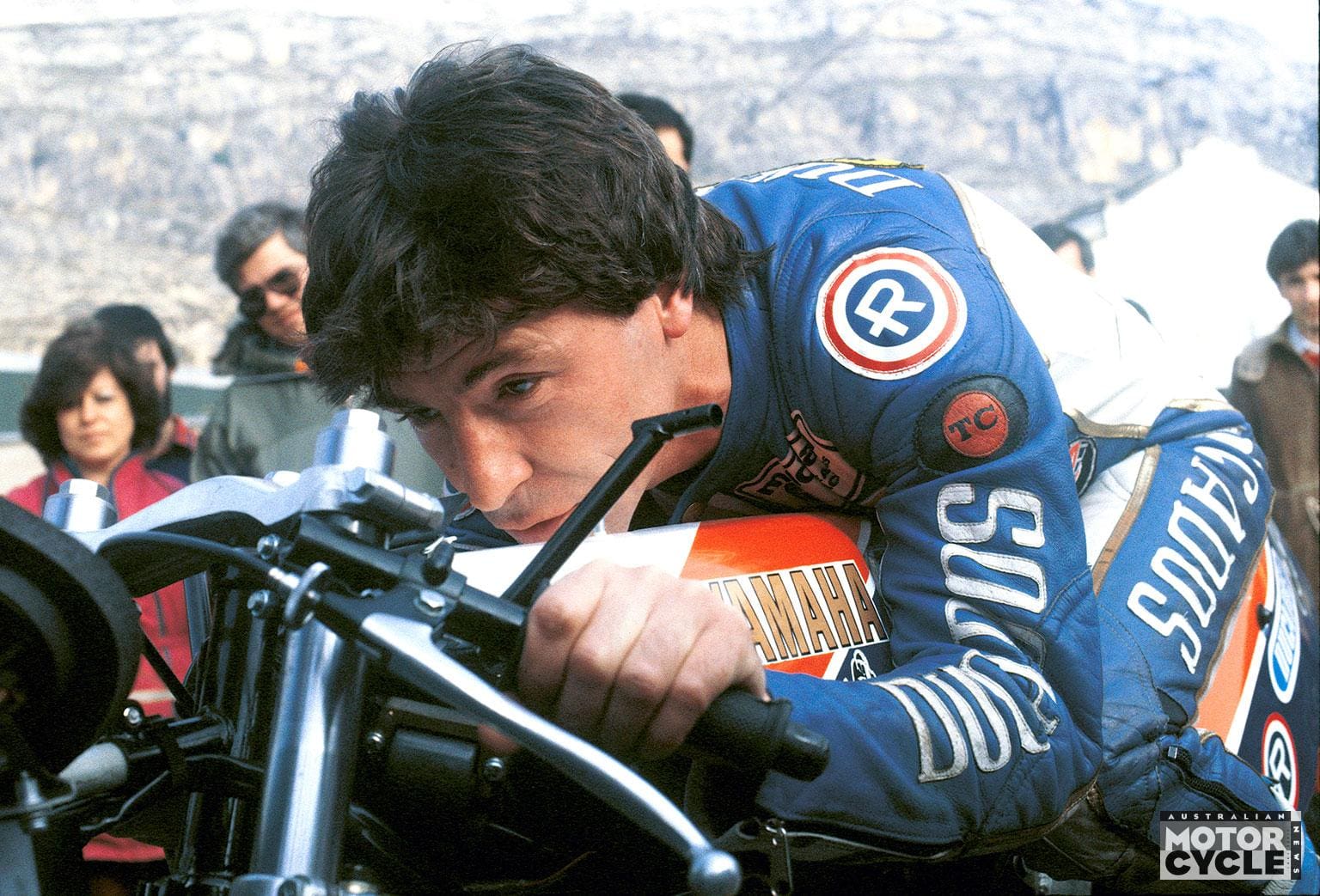Ken Rivers immigrated to Australia to work his brother’s dairy farm in South Australia. But, on arrival, he decided to take a look around his new country. An experienced motorcyclist, he chose two wheels simply based around cost and autonomy. Arnie Hansen, Sales Manager for British Motor Cycles, could see the benefit of having this personable young chap circling the colony on the new 500cc AJS Springheel, promoted as “capable of covering vast distances through arid uninhabited territory under a sweltering sun and tropical rain”.
Hyperbole aside, in his heavy greatcoat, leather helmet, goggles and voluminous rubber waders, Rivers appeared anything but a man headed for the tropics when he left Victor Harbour in May 1952. Five days later, having followed the coastline all the way, he crossed the Sydney Harbour Bridge and continued north to Wauchope before cutting inland. He quickly discovered the New England Ranges were no place to ride in mid winter and was soon defrosting on the beach at Burleigh Heads.
It was above the tropics where Rivers cut new ground for motorcycles, comparing the corrugations to the ancient cobblestones of Europe. Back in 1952 few vehicles had ventured as far north as Daintree and Rivers’ appearance caused quite a stir. It would be another 20 years before the jungles beyond Daintree became trafficable, so Rivers headed west over the Atherton Tableland to the monotonous isolation of the Gulf Savannah. There he found he could achieve speeds of 70km/h – before coming to a somewhat messy dead stop in a wire fence.

The rugged country south of Mount Isa almost brought Rivers to a similar halt when, having to negotiate 139 steep and rocky creek crossings in as many miles, the heavy AJS proved quite a burden. From the horrors of the Selwyn Ranges he rode out into the never-ending expanse of the Barkly Tableland bisected by newly sealed roads built by the military in WW2. With such options available, what possessed Rivers to attempt the Munanji Stock Route is unknown. He quickly learnt why the track was known as the ghost road of the drovers as he became covered in fine bulldust which he reported as strongly resembling French chalk.
Yet all it took was 10 weeks for Rivers to consider Australia home, later referring to Oz as ‘out here’ and the outback as ‘out there’. And it was out there that he became ‘sandwise’ by deflating his tyres and experimenting with weight distribution. This proved very timely in the notorious Pardoo Sands where he suffered many falls, resulting in an untimely ankle sprain.
Four months and 20,000km later, Rivers returned to Adelaide where Arnie Hansen had his faith rewarded when the AJS Springheel went on display in the BMS showrooms, a spate of advertising of course followed the feat.
While earlier motorcyclists had clocked in at the GPO in every mainland capital, Rivers had become the first to circumnavigate the continent on the roads closest to the coastline; another three years would pass before his route was designated National Highway One and 30 before it was finally sealed.
Rivers had used only 12 pints of Castrol Oil, a product he endorsed so heartily he was soon appointed Sales Manager for CC Wakefield as the man who had ridden unaided around the Motherland’s largest and most distant colony.












